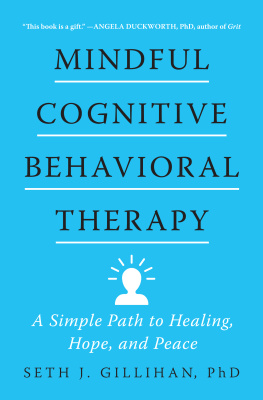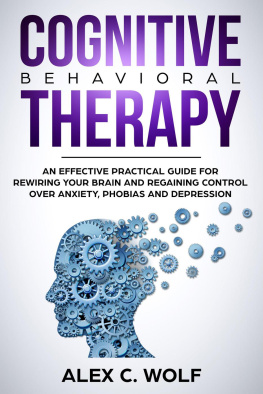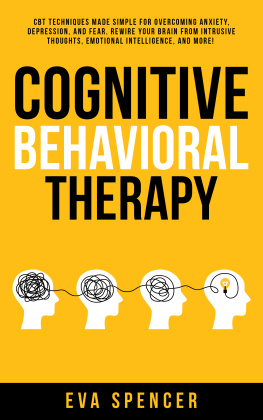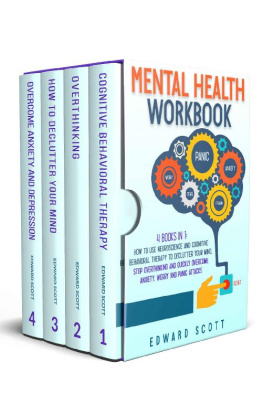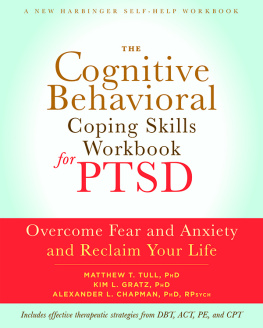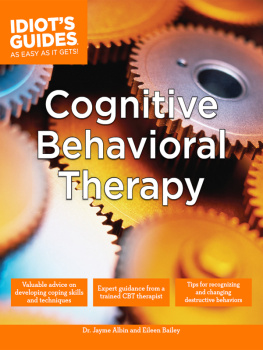For Marcia Lynn Leithauser
If you want to discover the truth about God,
dont strive for things that lie beyond you.
Draw your thoughts inward to the center, and
seek to become one and simple in your soul.
Let go of all that distracts you, all you desire,
and come home to yourself, and when you do,
youll become the truth you first sought.
Meister Eckhart (12601328)
Contents
I f theres a common longing among the hundreds of people Ive treated in therapy as a clinical psychologist, its for an end to their pain. But my own journey through depression taught me that relieving symptoms is not enough. More than finding a cure for suffering, our deepest longing is for peace. That distinction is what this book is about.
Most people who come to see me are dealing with some form of overwhelming anxiety: panic, constant worry, obsessive-compulsive disorder (OCD), social fears. Many are healing from trauma, sometimes recent, sometimes from their childhood. Some are fighting through daily depression or chronic illness or are wondering if their marriage can be saved. Others are desperate for a good nights sleep. In one way or another, theyre yearning for relief from the stress and strain of life.
People seek out my services because they believe I can help them find relief and peace through cognitive behavioral therapy (CBT), the most scientifically tested therapeutic method practiced today. CBT is a straightforward approach that integrates two components:
- Cognitive therapy for practicing healthy patterns of thought
- Behavioral therapy for helping us choose actions that lead us toward our goals
Treatment tends to be brief, typically eight to fifteen sessions, and addresses current problems rather than focusing on a persons childhood and relationship with their parents. I was drawn to this approach early in my graduate training because I wanted to relieve suffering, and CBT seemed like the most efficient path to healing.
But after a number of years helping others as a CBT therapist, I discovered that I needed help as well. I had slowly dropped into a deep depression, and despite all my training, I was struggling to find my way out. Eventually, as I groped my way forward, I discovered something surprising and significant. I learned that CBT could be more than a means for eliminating symptoms, which was how I had been using it. When combined with mindfulness practices, it could also address questions of meaning, purpose, and even spiritual peace.
That is quite a claim, I know. But be assured this is not one of those books by some self-designated guru who claims to have finally figured out the secret of the universe and wants people to follow behind. I am by no means the first person to walk this road.
My goal, instead, is to simplify the process that I found to be so incredibly helpful so that as many people as possible can experience it for themselves. This life-changing approach can be summarized in three words, making it easy to remember on the fly when you need it: Think Act Be.
Descent
I was motivated to become a psychologist in part by what I knew of my grandfathers emotional struggles and his suicide eight years before I was born. Frank Rollin Gillihan was haunted by horrific memories of naval combat in the South Pacific during World War II; I wondered what his life would have been like if he had gotten effective psychological treatment. Maybe he would have lived to meet his grandchildren. His only childmy fatherwould have been spared the pain of losing his dad to suicide. That pain was a felt presence throughout my childhood, often apparent in my dads irritability and temper. At other times it was raw grief, such as when I was eight and walked in on my parents in our laundry room. My mom had her arm around my dad as he sobbed, a stack of old family photos in his hand.
I did my training at the University of Pennsylvania, the birthplace of many CBT treatment programs. The faculty were deeply engaged in developing short-term, effective treatments and testing them in rigorous clinical trials, and my faith in the power of CBT deepened as I witnessed its effects firsthand. I saw the power of thoughts to affect our emotions. I learned how simple changes in our actions can boost mood and bring greater fulfillment.
I continued at Penn after I graduated and took a faculty position in an anxiety research center, where I oversaw a treatment study of CBT for post-traumatic stress disorder (PTSD). Participants came from the surrounding community and the local Veterans Affairs hospital, men and women haunted by traumatic memories of violence and pain. After the twelve-session protocol, many were transformed, freed from nightmares and flashbacks and ready to live their lives again. I often thought of my grandfather.
When I left Penn and opened a solo private practice, I continued to offer CBT. It was exhilarating to see the dramatic effects that a few sessionssometimes just five or sixcould have on a persons life. The grip of anxiety would loosen, depression would lift, sleep would improve. My schedule quickly filled with people who wanted an action-focused way to feel better.
But as I continued to practice, I was often struck by changes my patients were experiencing that seemed to transcend simple symptom reduction. People described feeling lighter, freer, more connected to a version of themselves that they liked. Their family members told me with tears in their eyes that they finally had their loved ones back.
I wasnt sure what to make of these changes, since they didnt fit neatly with my CBT view of therapy that focused on measurable outcomes. At times, I even envied the deep work they were doing and the new levels of peace and happiness that theyd found.
I was especially struck by the deep changes I saw with Paul, a young dad who was out of work. His childhood had been tough, and Paul had hated himself for as long as he could remember. His father had left the family when Paul was five, and Paul always felt that he was his moms least favorite child. He had battled alcohol addiction early in his life and had struggled in his closest relationships.
Pauls biggest challenge was feeling like a failure to his young daughter and son. Hed been deeply wounded by his dads departure and had always vowed hed be a father his children could be proud of. With his job loss and the depression that followed, he thought they must see him as a pathetic disappointment. He choked on the words every time he tried to talk about disappointing his kids but would wave off the tissue I offered. His shame would quickly turn to anger at himself for being a crybaby as he roughly brushed away the tears with the heel of his hand. Paul denied being an imminent threat to himself but said he often imagined ending his life.
We had worked together for many monthslonger than a textbook course of CBTand he had made slow but steady progress. He had gradually and consistently started doing more activities that brought him enjoyment and a sense of accomplishment, which dramatically improved his mood. Paul also learned to recognize the lie in his horrible thoughts about himself, such as Im worthless and everyone would be better off without me. And yet there remained a deeper undercurrent of self-hatred that seemed to resist the efforts he was making in therapy.
But one day Paul shocked me. The tears came, and he let them. Only this time, he wasnt crying about being a lousy father. He was crying for his five-year-old self who had lost his dad and had never known love until he had kids of his own. Through his tears, he told me he was starting to feel love for himself. I was wiping away tears of my own. I had hoped for this day as long as Id known Paul, who in truth was easy to love.
But when Pauls relationship with himself finally shifted, it caught me by surprise. Our self-directed thoughts and feelings are stubbornly hard to change. I was used to seeing patients make incremental changes in these areas but often somewhat begrudgingly and with a lingering sense of self-loathing. Pauls transformation was of a different kind. It was as if a barrier had been torn down between his heart and himself, releasing a wave of self-love that he had held back for decades. He could finally see that his wounds and suffering called for compassion, not disgust.
Next page
